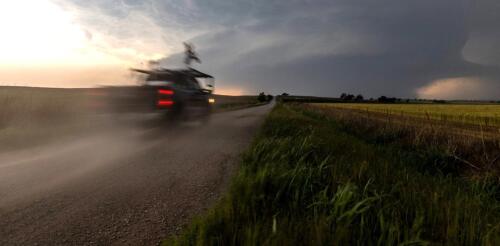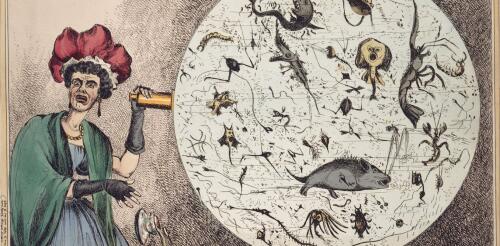Science
Storm-chasing for science can be exciting and stressful – we know, because we do it. It has also been essential for developing today’s understanding of how tornadoes form and how they behave. In 1996, the movie “Twister” with Helen Hunt brought storm-chasing scientists into the public imagination and inspired a generation of atmospheric scientists. With the new “Twisters” movie hitting theaters, we’ve been getting questions about storm-chasing – or storm intercepts, as we call them. Here are some answers about what scientists who do this kind of fieldwork are really up to when they race off after storms. Scientists with the National Severe Storms Lab ‘intercepted’ this tornado to collect data using mobile radar and other instruments on May 24, 2024. National Severe Storms Lab What does a day of storm-chasing really look like? The morning...
Strange as it may seem, early germ theorists could tell us a lot about today’s attitudes toward climate change. While researching for a new book about the history of emerging infections, I found many similarities between early debates over the existence of microbes and current debates over the existence of global warming. Both controversies reveal the struggles of perceiving an unseen threat. Both reveal the influence of economic interests that benefit from the status quo. But most importantly, both reveal how people with different beliefs and interests can still agree on key policies and practices for tackling a global problem. What you can’t see might hurt you Seeing is believing, and until the mid-19th century, it was very difficult to see the tiny organisms responsible for our so-called “fever” diseases. Although the indirect evidence was compelling, many people remained skeptical of “animalcules” – as microorganisms were once cal...
The historic Paris climate agreement started a mantra from developing countries: “1.5 to stay alive.” It refers to the international aim to keep global warming under 1.5 degrees Celsius (2.8 Fahrenheit) compared with preindustrial times. But the world will likely pass that threshold within a decade, and global warming is showing little sign of slowing. The world is already facing natural disasters of epic proportions as temperatures rise. Heat records are routinely broken. Wildfire seasons are more extreme. Hurricane strength is increasing. Sea level rise is slowly submerging small island nations and coastal areas. The only known method able to quickly arrest this temperature rise is climate engineering. (It’s sometimes called geoengineering, sunlight reduction methods or solar climate intervention.) This is a set of proposed actions to deliberately alter the climate. These actions include mimicking the cooling effects of large volcanic eruptions by putting la...
In a catchy YouTube video, British comedian Jo Brand translates a scientist’s long-winded description of the fossil fuel industry’s role in the climate crisis this way: “We are paying a bunch of rich dudes 1 trillion dollars a year to f--- up our future,” she says. “Even the dinosaurs didn’t subsidize their own extinction. Who’s the stupid species now?” Although there is nothing funny about the subject, the way she says it is funny. She speaks truth to power. She relieves the heaviness of the rhetoric. And she’s dropping f- and s-bombs with a British accent. At the start of the video, Brand comments, “If people like me have to get involved, you know we’re in deep s---”. We all need some refreshing levity nowadays – especially this year. Around the world, voters will be choosing national leaders in countries representing nearly half the human population. In many cities, states and counties, those deci...
What is it with scientists and clocks? Yes, determining the duration of phenomena is important to research, not to forget seemingly unconnected realms like navigation — Britain ruled the waves for centuries, thanks to John Harrison’s clock, accurate time-keeping being the key to determining longitude. Clocks also serve science as metaphor — start with Albert Einstein, struggling to jibe the fixed speed of light with his aborning theory of relativity, looking at the medieval clock tower in Bern and realizing that time is not fixed, but elastic. He started sending notional clocks zipping at the speed of light in thought experiments, trying to nudge us dullards into comprehension. The practical value of Einstein’s 1905 musings was dramatically demonstrated at the University of Chicago in 1942, when the first controlled, self-sustaining nuclear reaction was midwifed by Enrico Fermi. So it makes sense that another fine Hyde Park institution,...




